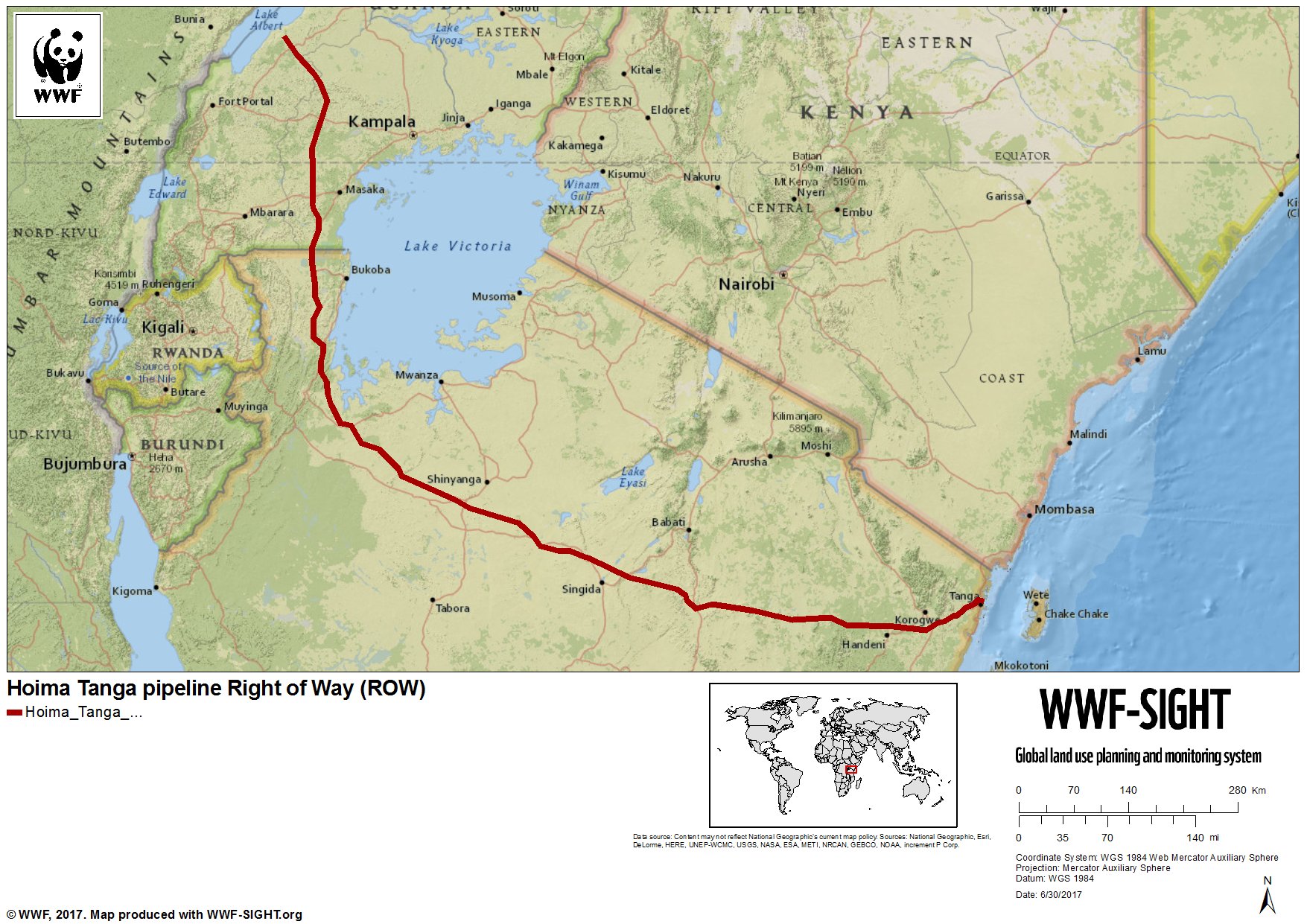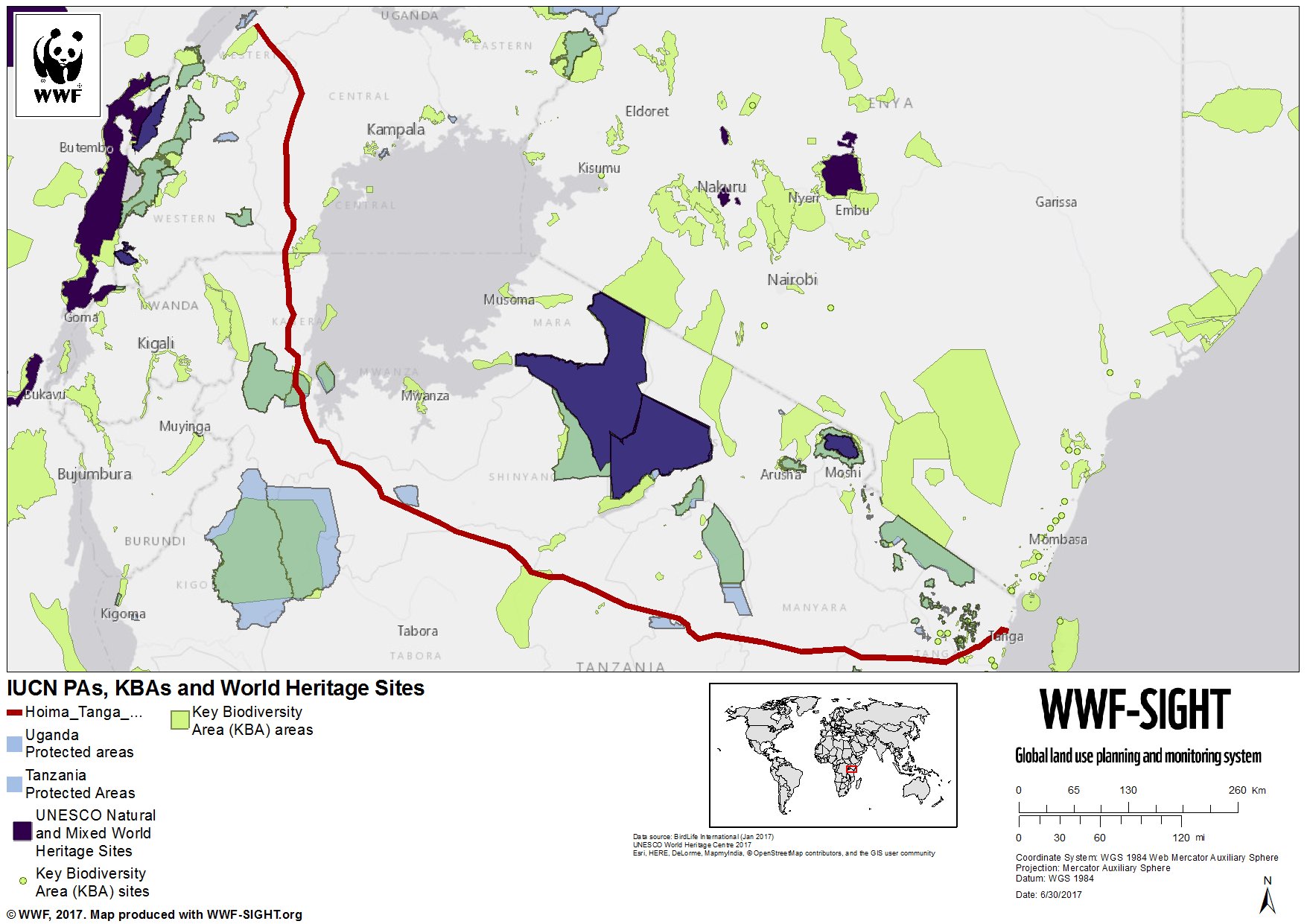Preliminary Threat Analysis (PTA) of the East Africa Crude Oil Pipeline (EACOP)

The Eastern Africa region is rife with oil and gas resources and new developments are increasingly taking places across various countries including Kenya, Uganda, Tanzania, Mozambique, South Sudan and Rwanda. This paper is a Preliminary Threat Analysis (PTA) of the East Africa Crude Oil Pipeline (EACOP) also known as the Hoima – Tanga pipeline, a 1,445 km long pipeline that will transport crude oil from Hoima in Uganda to Tanga on the coastline of North Eastern Tanzania. The pipeline construction is set to start in 2017 and end in 2020 and will cost approximately $3.6 billion capital expenditure and USD$ 91 million operational expenditure per annum (Directorate of Petroleum, 2017).
A Preliminarily Threat Analysis (PTA) carried out using WWF-SIGHT’s approach for risk analysis, highlights some of the potential environmental impacts and associated socio-economic implications of the development of the Hoima – Tanga pipeline and provide an early warning on some of these concerns and encourage a thorough risk analysis and Environmental Impact Assessment (EIA) of the pipeline.
The results of the overlap analysis reveals that of the pipeline crosses several biodiversity important areas including the Biharamulo Game reserve, the Wembere Steppe and several wildlife habitats including 510 km of African Elephant Habitat. In addition, the pipeline overlaps for 460 km the basin of Lake Victoria crossing several streams and rivers, in particular the Kagera River, the largest river flowing into lake Victoria. The pipeline will deliver oil to a port located in an area reach in mangroves and coral reef, as well as adjacent to two Ecologically or Biologically Significant Marine Areas (EBSAs). These overlaps pose a significant and sometime severe threat to these environmental assets and subsequently to people in the region.

Although the Hoima-Tanga Oil and Gas pipeline present an economic opportunity, the governments of Uganda and Tanzania need to put into action their legislated commitments to safeguard nature and people during the development of the oil and gas sector in the region. However realizing this opportunity will require proper assessment of the various environmental and socio-economic risks associated with this huge infrastructure undertaking. It will also require the cooperation between central and local governments, private sector and civil society as well as close consultations and engagements with affected local communities at each step of the pipeline project. It is our expectation that as the two countries embark on this large infrastructure project, more information will be made publically available to enable effective public participation, oversight and engagement.